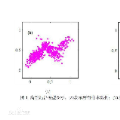This paper addresses the path-planning challenge for very large-scale robotic systems (VLSR) operating in complex and cluttered environments. VLSR systems consist of numerous cooperative agents or robots working together autonomously. Traditionally, many approaches for VLSR systems are developed based on Gaussian mixture models (GMMs), where the GMMs represent agents' evolving spatial distribution, serving as a macroscopic view of the system's state. However, our recent research into VLSR systems has unveiled limitations in using GMMs to represent agent distributions, especially in cluttered environments. To overcome these limitations, we propose a novel model called the skew-normal mixture model (SNMM) for representing agent distributions. Additionally, we present a parameter learning algorithm designed to estimate the SNMM's parameters using sample data. Furthermore, we develop two SNMM-based path-planning algorithms to guide VLSR systems through complex and cluttered environments. Our simulation results demonstrate the effectiveness and superiority of these algorithms compared to GMM-based path-planning methods.
翻译:暂无翻译




